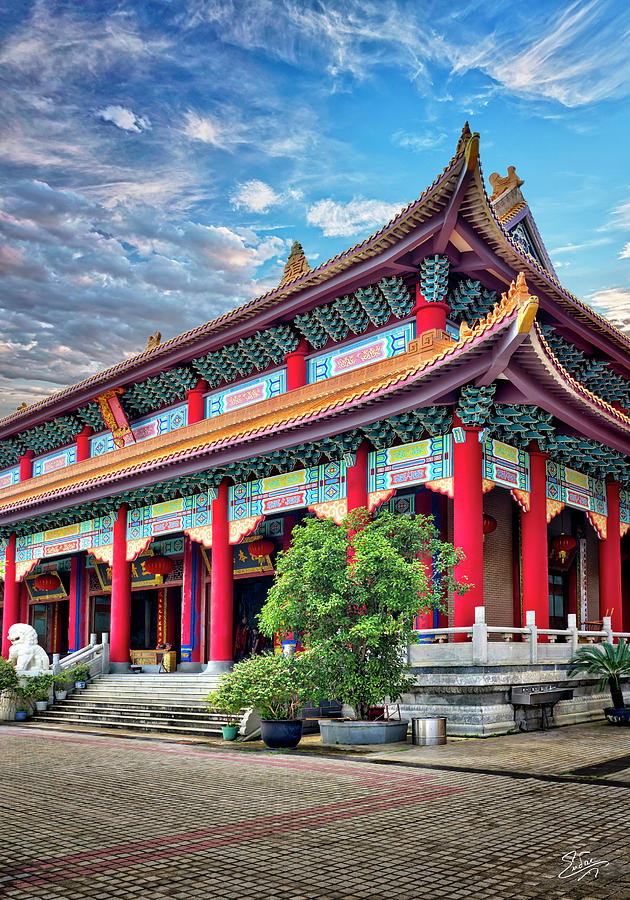Huanglongsi Temple: A Glimpse Into Architectural Splendor And Rich History
Share

Huanglongsi Temple, located in the picturesque region of Sichuan, China, is a remarkable site that beautifully marries architectural elegance with a profound historical narrative. This temple is not just a place of worship; it is a testament to the artistic and cultural heritage of the region. In this article, we will explore the intricate architecture of Huanglongsi Temple, delve into its historical significance, and provide you with essential travel tips for your visit.
Architectural Marvels of Huanglongsi Temple

The architecture of Huanglongsi Temple is a stunning representation of traditional Chinese temple design. It features intricate wooden carvings, vibrant colors, and a harmonious layout that reflects the philosophical principles of Feng Shui. The temple complex is characterized by its tiered roofs, which are adorned with ornate dragon motifs, symbolizing power and protection.
Key Architectural Features
-
Main Hall (Daxiong Baodian): The centerpiece of the temple, this hall is where the main deity is enshrined. It boasts a magnificent wooden structure supported by intricately carved pillars. The ceiling is adorned with colorful murals depicting various Buddhist symbols.
-
Pagodas: The temple complex includes several pagodas, each with its unique design. These structures serve both religious and aesthetic purposes, often housing relics or scriptures.
-
Courtyards: Surrounding the main hall are beautifully landscaped courtyards that provide a serene atmosphere for meditation and reflection. The gardens are meticulously maintained, featuring traditional Chinese flora.
-
Stone Carvings: Throughout the temple, visitors can find exquisite stone carvings that narrate stories from Buddhist texts. These carvings are not only artistic but also serve as educational tools for worshippers.
The Influence of Buddhism
The architectural style of Huanglongsi Temple is heavily influenced by Buddhist philosophy. The layout of the temple is designed to create a sense of tranquility, encouraging visitors to engage in contemplation and prayer. The use of natural materials, such as wood and stone, reflects the Buddhist principle of harmony with nature.
Historical Significance of Huanglongsi Temple

Huanglongsi Temple has a rich history that dates back to the Tang Dynasty (618-907 AD). Originally built as a small shrine, it has undergone numerous renovations and expansions over the centuries, evolving into the grand temple complex we see today.
Key Historical Events
-
Tang Dynasty Origins: The temple was first established during the Tang Dynasty, a period known for its cultural and artistic advancements. It served as a center for Buddhist learning and practice.
-
Ming and Qing Dynasties: During these dynasties, Huanglongsi Temple experienced significant expansion. Many of the structures that exist today were built during this time, showcasing the architectural styles of the era.
-
Cultural Revolution: Like many historical sites in China, Huanglongsi Temple faced challenges during the Cultural Revolution (1966-1976). Many artifacts were destroyed, and the temple fell into disrepair. However, dedicated efforts have since restored it to its former glory.
-
Modern Day Significance: Today, Huanglongsi Temple is not only a place of worship but also a cultural heritage site. It attracts thousands of visitors each year, offering a glimpse into the rich tapestry of Chinese history and spirituality.
Visiting Huanglongsi Temple
Best Time to Visit
The ideal time to visit Huanglongsi Temple is during the spring (March to May) and autumn (September to November) months. During these seasons, the weather is mild, and the natural surroundings are at their most beautiful. Expect temperatures ranging from 15°C to 25°C (59°F to 77°F), making it comfortable for exploration.
Getting There
Huanglongsi Temple is easily accessible from Chengdu, the capital of Sichuan Province. You can take a bus or hire a private transfer for a more convenient journey. The temple is located approximately 30 kilometers from the city center.
Accommodation Options
For a comfortable stay, consider booking a hotel in Chengdu. Here are some options:
These links will help you find the best deals for your trip.
Things to Do Nearby
While visiting Huanglongsi Temple, take the opportunity to explore the surrounding area. Here are some activities you might enjoy:
- Visit the Giant Buddha of Leshan: A UNESCO World Heritage site, this colossal statue is a short drive from the temple.
- Explore Mount Emei: Another UNESCO site, known for its stunning landscapes and ancient temples.
- Taste Local Cuisine: Sichuan is famous for its spicy food. Don’t miss trying hot pot or mapo tofu at a local restaurant.
Conclusion
Huanglongsi Temple stands as a magnificent representation of Chinese architectural brilliance and a rich historical narrative. Its intricate designs and serene atmosphere make it a must-visit destination for anyone traveling to Sichuan. Whether you are a history buff, an architecture enthusiast, or simply seeking a peaceful retreat, Huanglongsi Temple offers something for everyone. As you walk through its hallowed halls, take a moment to reflect on the centuries of devotion and artistry that have shaped this remarkable site.
Plan your visit today and immerse yourself in the beauty and history of Huanglongsi Temple!



